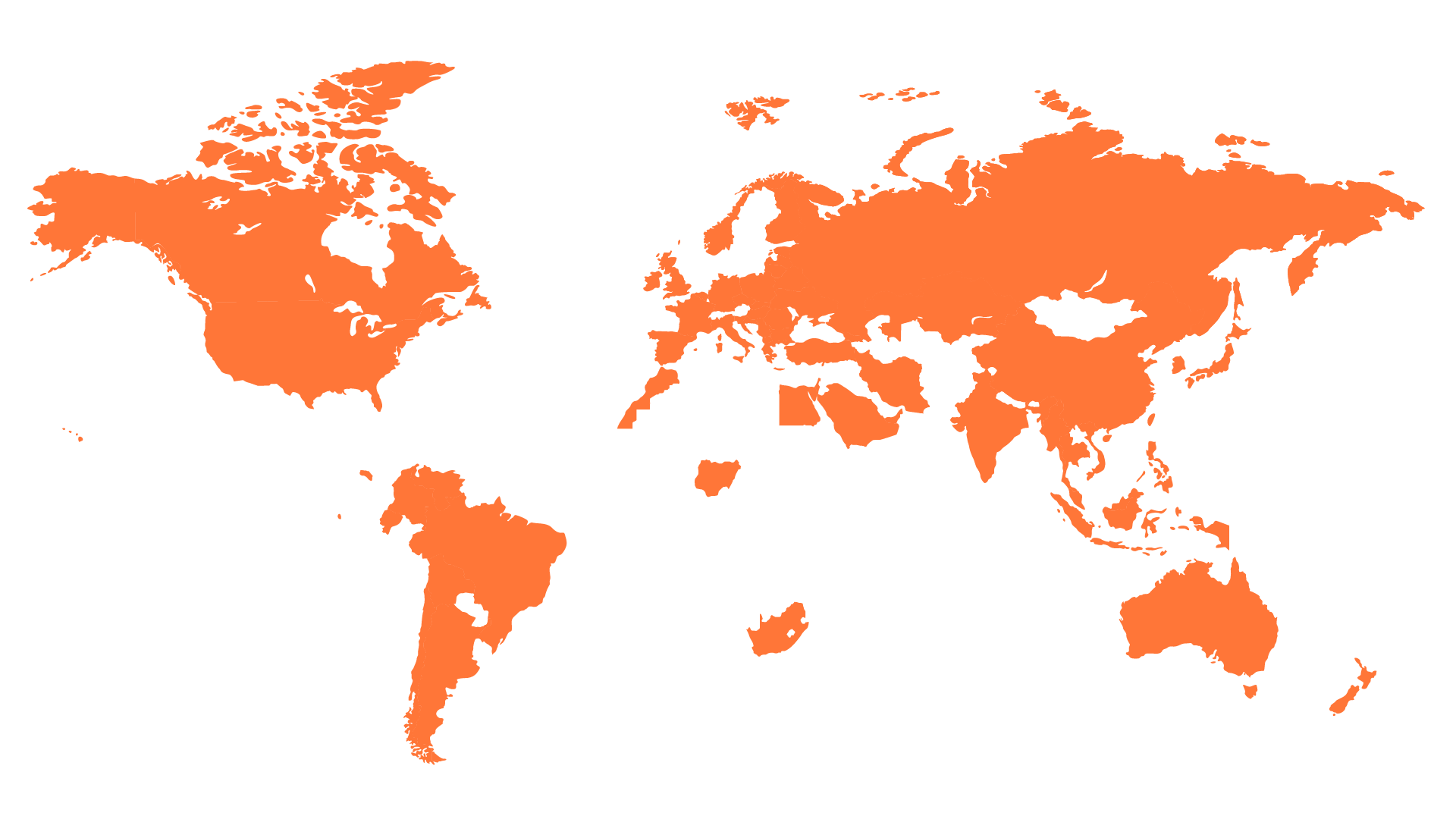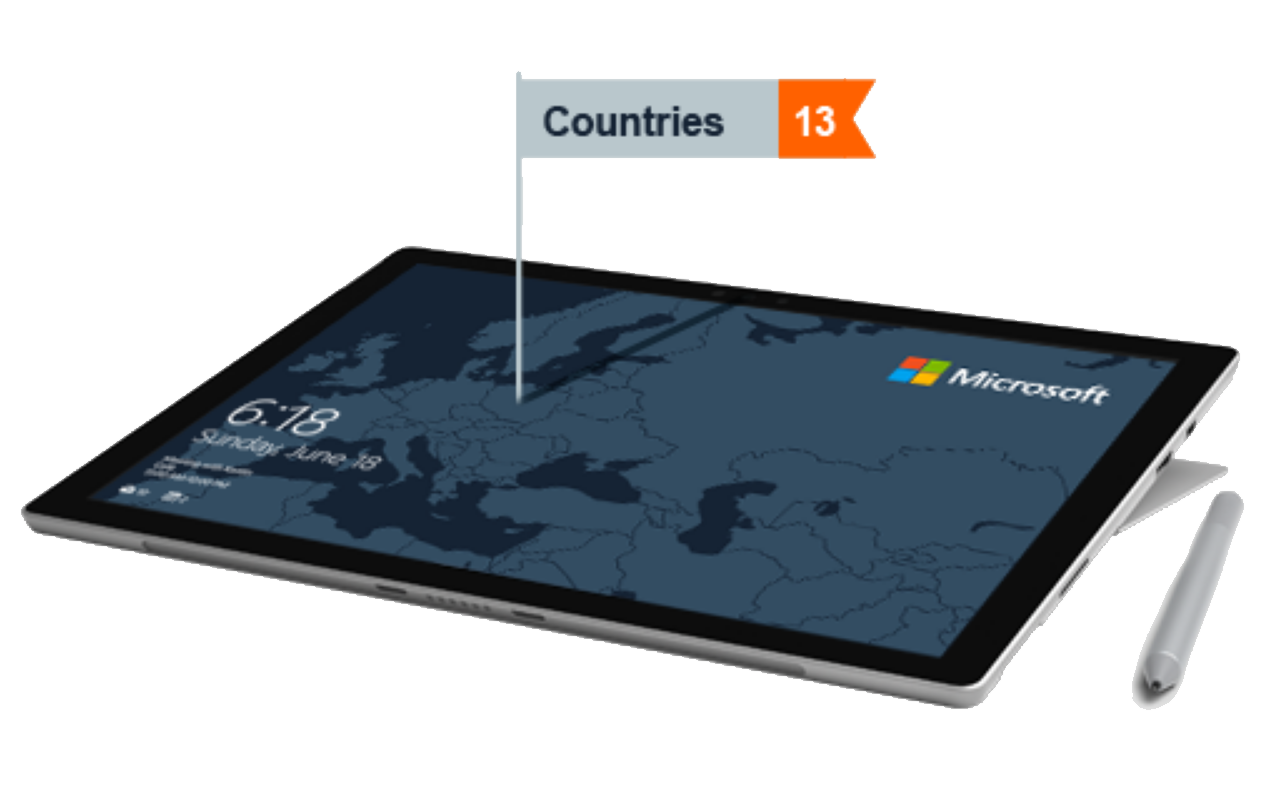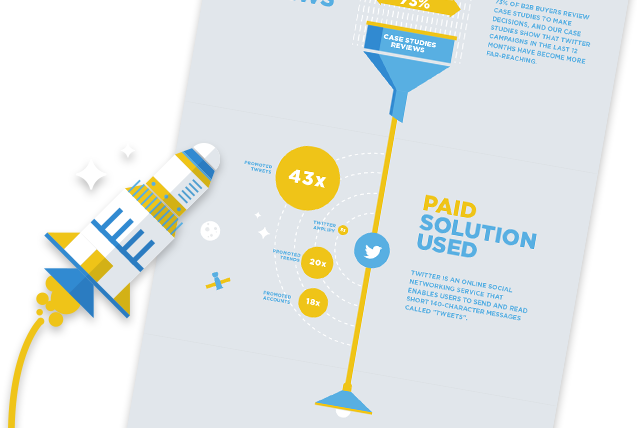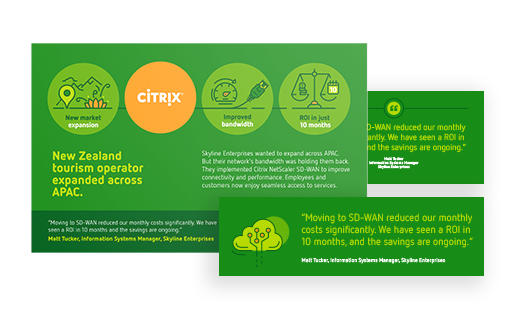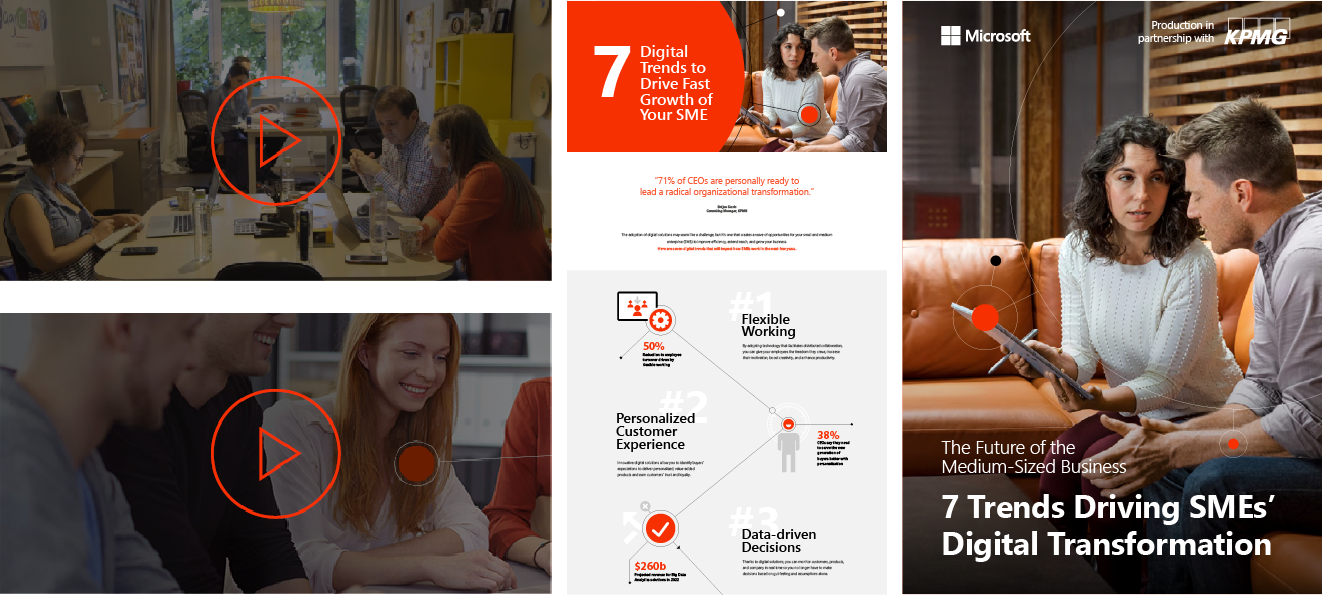
When you think of customer interviews, you might imagine a long conversation that ends up as a case study. But that’s just the beginning. A single customer interview can be a goldmine of content waiting to be mined and forged into purposeful, authentic pieces to promote your customer’s success and help your prospects. In this article, we want to explore the variety of marketing materials that could result from just one interview.
1. Customer success story
A customer success story is the classic way to showcase a customer's success. Most stories dive deeper into the specific problems the customer faced, the decision-making process that led to the solution, and the business impact it brought about, but sometimes, you may opt for a simpler case study. Whether a narrative story or a case study, both formats offer useful insight for your prospects and unique opportunities to promote your customer’s success.
Benefits
-
- Build trust through real-world examples.
- Provide insights into customer experiences.
Applications
-
- Share on your website: Make the customer success stories easily accessible on your website’s success stories section and/or link from your product/solution pages. This will help to build credibility with prospective clients.
- Use in the sales cycle: Equip your sales team with customer success stories to help close deals by showing tangible results to prospective clients.
- Include in newsletters: Share with your existing customers to keep them informed and engaged with real success stories, enabling them to explore your other products/solutions.
Pro tips for customer success stories
-
- Structure: While most people focus on the ‘success’ component of the story, you’ll need to uncover the customer's challenge. Only then will the solution and results feel like an achievement. Use metrics and rely on customer’s direct quotes to add authenticity to the story and make each unique.
- Design: Include visuals like profile pictures or photography to convey the customer’s company culture, make the content more engaging and easier to digest.
- Journey: Include appropriate calls-to-action (CTAs) into the story, encouraging readers to contact your sales team, learn more about your solutions, or attend a webinar. Often, a universal CTA might not be appropriate, so consider the natural next steps your prospects might take after reading each customer success story.
2. Blog posts
An average 45-minute to an hour long interview results in approximately 8,000 words. Some of these words will be musings about the state of the industry, opinions, experiences and other insights that the customer relied on their journey. Instead of leaving most of this out, you could turn such points into engaging articles. When crafting these, focus on specific themes or insights that emerged during the conversation and that your customer truly cares about: it is very likely that prospects from similar industries and positions care about them too.
Benefits
-
- Drive traffic to your website.
- Increase engagement with your audience.
Applications
-
- Feature on your blog: Regular blog posts keep your website fresh and relevant, boosting your ranking across search engines. Opening up authorship to external contributors can make your blog a source of insight for your target audience, enabling you to drive more regular inbound traffic.
- Share on social media: Promote the blog posts to reach a wider audience and encourage discussion. This can not only help you reach your target audience but will also provide valuable promotion for your customer.
- Cross-promote on other platforms: You might be able to leverage customer blog posts to gain exposure on various industry or role-specific platforms and news outlets. This can help both you and your customer build up a thought leadership position.
Pro tips for blog posts
-
- Themes: Compose the blog post around themes or topics in the interview that resonate with your audience. Where appropriate, you might even explore the possibility of two or three customers getting featured in a single blog post (e.g. same industry, different geographies or vice versa).
- Longevity: Use relevant keywords, phrases, and terminology to ensure the content is search-engine friendly to attract organic traffic. You might need to revisit the articles every once in a while to update the content or add editorial notes to reflect changes in the featured customer’s organization.
- Community: Encourage readers to comment, share, or contact you for more information. If you’re planning to create blog posts with a number of customers, you might even build a gated community where your customers can connect with each other to discuss their experiences, learn, and network.
3. Social media posts
Social media is perfect to share short snippets and powerful quotes from the interview. Some quotes might be an anecdote from the interview that perhaps was just a bit too informal for the story or an article. Other quotes might be interesting and impactful, but might have little to do with the success or the theme of a blog post. These quick sparks can all be translated into engaging, fun, or resonating social media posts to engage your audience and promote your customer.
Benefits
-
- Promote your customer, enabling them to build thought leadership.
- Engage a broader audience.
- Increase brand visibility.
Applications
-
- Share across: Tailor the content to suit each platform’s audience and format. More professional content for LinkedIn, more opinionated posts for Twitter, and more casual pieces for Facebook. If you’re recording the interviews, explore if your customer would be willing to use audio/visual snippets of the interview for Instagram or TikTok.
- Internal distribution: Much like promoting external, you could use social posts to highlight customer success across your own organization to ensure that sellers, marketers, and any other internal stakeholders are always aware of new customer proof assets. Use your Teams or Slack channels to share the posts.
Pro tips for social media posts
-
- Hashtags: Relevant hashtags can help your audience discover your posts, but don’t overdo it (1-3 tags are enough).
- Cadence: Use a content calendar to plan and schedule posts consistently to increase engagement. If you have the opportunity, aim to schedule posts that fit a similar theme or topic within the same week/month and recap at the end of it with a neat carousel.
- Interactions: Encourage discussion by tagging the featured customer and respond to comments to encourage a sense of community.
4. Videos
If you record your customer interviews, with the customer’s consent, you might be able to use clips from it to create video customer stories, testimonial videos or social media teasers. Highlight an insightful phrase, piece together the full customer’s journey or just a funny moment: if you’re creative and your customer is willing, you can get a lot done with a single recording.
Benefits
-
- Video content is more digestible, hence appeals to a broader audience.
- Video allows to convey emotion, increasing engagement rates.
Applications
-
- Channels: You can post videos on your website and distribute it through YouTube or social media, tapping into a broader, potentially new audience.
- Distribution: Videos can add a dynamic element to sales presentations, events, newsletter or a break during a webinar.
- Onboarding: Whether welcoming a new employee or a new customer, showcasing your customer’s success is the best way to convey the values and goals of any organization.
Pro tips for videos
-
- Clarity: Start your video at the end. And by that, we mean that you should first decide what the video should help achieve and compose the video from there. This will not only help you nail the main message, but also ease the editing process and number of revisions.
- Accessibility: Ensure your video is accessible by adding subtitles and text highlights to make it easier for viewers to follow along or consume the video without sound (e.g. social media).
- Action: Encourage viewers to visit your website, sign up for a demo or contact your sales. Videos tend to travel far and wide, so build the call-to-action (CTA) directly into the video to ensure that even when re-shared, it’s bringing the audience back to your desired next step.
5. Podcasts
If you record the customer interviews, but can’t or don’t want to use the visuals, the audio can still be turned into a podcast episode. Compose an episode around the themes discussed during the interview, interview the customer as a guest for your existing podcast, or build an entire podcast around the concept of customer interviews.
Benefits
-
- Reach a different audience segment.
- Provide a platform for in-depth storytelling.
Applications
-
- Streams: Feature your podcast on common streaming platforms, such as Apple Podcasts and Spotify or create an RSS feed.
- Visual: Add a basic visual component and convert your podcast into a long-form video to upload on Youtube and reach an even broader audience.
Pro tips for podcasts
-
- Quality: Ensure clear audio quality and edit out any unnecessary parts to keep the content crisp and engaging. You might even consider shipping basic recording equipment to your customers.
- Requirements: If you’re planning to feature your podcast on various platforms, investigate the technical requirements of each to ensure you’re producing a compliant format for the platform.
- Details: Take care to create impactful episode artwork, description, and any metadata to ensure that your podcast is not only appealing but easily discoverable to listeners.
6. Infographics
Infographics are great for visualizing data and processes. Extract key data points from the customer interview to create a compelling visual that illustrates the impact or conveys a journey.
Benefits
-
- Simplify a complex process.
- Share data in an easy and memorable way.
Applications
-
- Social media: Infographics are highly shareable and can drive engagement on platforms like Pinterest and LinkedIn.
- Website: Use infographics to break up text and illustrate key points more effectively in blog posts or customer success stories.
- Emails: Enhance your nurturing emails with an infographic to quickly convey key data and insights.
Pro tips for infographics
-
- Design: Use clear visuals that help get the message across and follow the ‘less is more’ approach. An infographic that is full of pretty graphics but doesn’t tell a story is worse than Clippy.
- Branding: Consider the placements of your and the customer’s logos. Adding these will ensure that viewers know the source, but it’s important to ensure compliance with the respective brand guidelines.
7. Ebooks and guides
Sometimes, you have those kinds of customer interviews: every answer is expansive and insightful, you’re having ‘aha’ moments left and right, and you run well over the allotted hour while neither you nor the customer notice. You think, “This could be a book to help every single one of our future customers!” And you’re right. So if you have those kinds of customer interviews, dive in and explore the broader themes discussed in an ebook or a guide format. Since it was relevant to your customer, it’s most likely to be relevant to your prospects too!
Benefits
-
- Establish authority through relevant examples and use cases.
- Provide value through content anchored in real-world experiences.
Applications
-
- Gated content: Use the ebook as a magnet to capture new leads.
- Onboarding: Provide the guide as a resource to help customers succeed in their adoption or implementation journeys.
- Website: Build the ebook as an ungated resource on your website to offer a sneak peek into the journey ahead to prospective customers.
Pro tips for ebooks and guides
-
- Content: Start with an outline to ensure a logical flow, develop the basics relying on the customer’s insights, but don’t stop there. Explore research, news, and reports to add insight that even the customer you interviewed would find valuable to truly make it impactful.
- Design: Opt for a clean layout with clear sections, headings, and visuals to make the content easy to navigate and information easy to consume.
- Hyperlinks: Whenever using hyperlinks in long-form content, opt for alias links. This will enable you to replace a link for a resource that may no longer be available or was replaced easily, without editing the ebook or guide itself.
8. Emails
Create a series of emails highlighting different aspects of the customer interview. Share context around the type of challenges your customers face to establish rapport. Explore the different ways your customers discover your solution and how they come to the purchasing decision. Convey the value customers realize with your solution, highlighting direct quotes.
Benefits
-
- Nurture leads with authentic and insightful content.
- Keep your audience engaged (everyone loves a story; each email can be a cliffhanger).
Applications
-
- Sign up: Introduce new subscribers to your brand through engaging, short customer stories.
- Newsletters: Keep your audience informed with regular updates around customer success.
- Campaigns: Segment your audience and choose customer interview content that fits specific interests and challenges.
Pro tips for emails
-
- Subject line: Make it short and make it count. Capture attention to encourage opens, but don’t overpromise, to ensure recipients actually read the content.
- Hook: The way that we all read email, you’ll want to open with the most impactful aspect of your message. Customer achieved 100% uptime? Start with that. There was a natural disaster that flooded the customer’s premises? That’s a dramatic opener. Once you have the reader hooked, you can explain the details.
- Sign off: Whether it’s visiting your website, contacting your sales team or waiting for the next email to find out what happened, always add the call to action to the email.
9. Webinars and Q&A sessions
Together with a willing customer, you might even be able to host a webinar followed by a question-and-answer (Q&A) session. By slightly editing the original interview recording, you’d have the first part of the webinar, which then could be followed by you and the customer answering audience questions. This can not only enable you to build trust with prospective customers but also enable your customer to build thought leadership and network within their field.
Benefits
-
- Encourage audience interaction and customer engagement.
- Provide a platform for live feedback.
Applications
-
- Social media: Use platforms like Facebook Live to host the event and reach a broad audience.
- Website: Extend the reach of your webinar by making it available on-demand on your website even after the live event.
- Self-help: Integrate the webinar into the resources you provide to your customers and prospects.
Pro tips for webinars and Q&A sessions
-
- Promotion: Use email and social media to announce the event well in advance and encourage registrations. Provide short teasers from the customer’s interview to entice your audience to attend.
- Engage: Encourage questions before and during the session to keep attendees engaged. Most people focus on questions during the event, but this usually results in a rather awkward first five minutes of the Q&A session. Instead, use the promotional teasers to generate initial interest and questions.
- Follow up: Send a thank-you email right after the event with a recording of the session, additional resources and call to action, if any.
10. Testimonials and quotes
Extract powerful quotes and testimonials from the customer interview and add them throughout your marketing materials where real-world examples and authenticity would have an impact. Product page with features? Add a customer’s quote. About us page? Add a testimonial. Onboarding brochure? A quote about how quickly a customer realized value. You can spread the voice of your customers throughout to validate your statements and add unique perspectives.
Benefits
-
- Build trust with potential customers.
- Highlight real customer experiences.
Applications
-
- Website: Display testimonials across appropriate pages to build trust with visitors.
- Marketing collateral: Use quotes in brochures, flyers, and other materials to reinforce credibility and a track record of customer success.
- Email: Feature customer testimonials to convey positive experiences and achieved success.
- User interfaces: Though less common, some features may benefit from a quick explanation from a happy customer to be adopted/used.
Pro tips for testimonials and quotes
-
- Impact: Select or edit quotes for brevity, and oomph factor.
- Visuals: Pair testimonials and quotes with customer photos or branded graphics to increase engagement.
Conclusion
Repurposing a single customer interview into various formats allows you to reach different audience segments and maximize the impact of your content. Each format has its unique benefits and applications. By leveraging these, you can enhance your content marketing strategy and build engagement with your audience.
Remember, every piece of content should be anchored in narrative. It may be a short narrative, but a narrative nonetheless. Your customer's story is a goldmine of words, so, get creative, and let those words fly.


